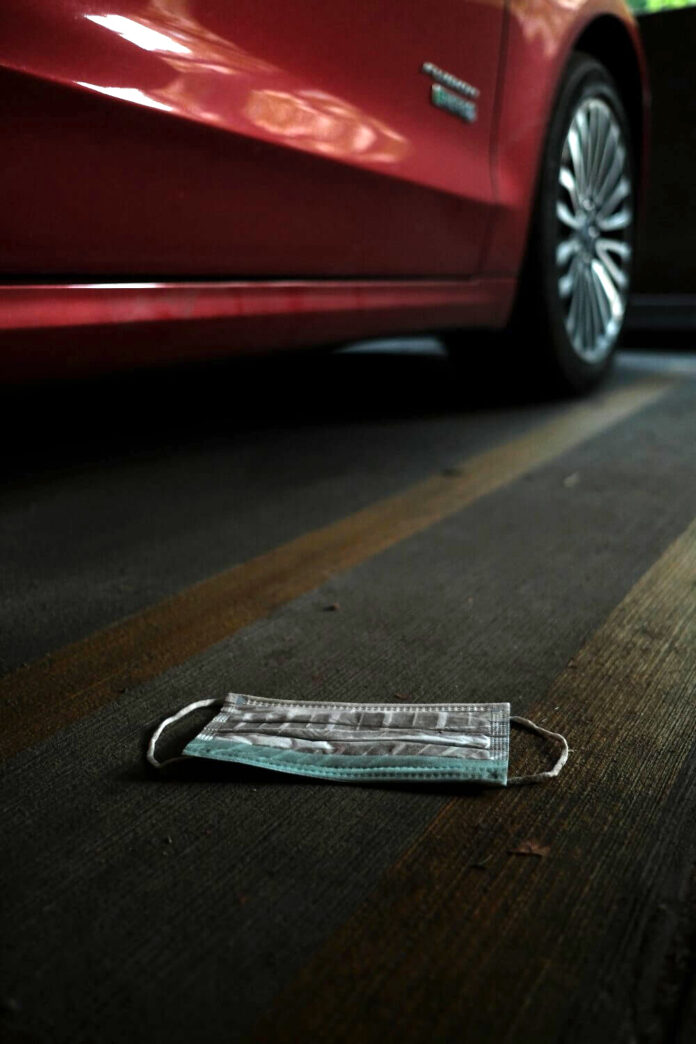
Occidental College lifted the indoor masking requirement on campus Sept. 26, including in spaces such as classrooms, the Marketplace, Tiger Cooler, residence halls and the Academic Commons. Masks are still mandatory in Emmons Student Wellness Center, Arthur G. Coons administrative center (AGC) COVID-19 testing site and forms of group transportation such as Occidental vans.
In a Sept. 20 email to the student body, Devon Sakamoto, assistant dean of students for Emmons Wellness Center and member of Occidental’s COVID Operations Group (COG), said the purpose for the mask policy change was to align with the county’s guidelines.
“To date, the trend has been an encouraging one. COVID cases on campus have been manageable and minimal,” Sakamoto said via email. “Over the past month, the campus positivity rate has been significantly lower than the countywide rate. Los Angeles County is now at the ‘low’ community level, as defined by the CDC.”
Although masking is no longer mandatory, faculty members still have the option to require masks in their classrooms, according to the COG. Each classroom’s masking policy varies depending on the professor’s response to the new guidelines.
For Carmel Levitan, a cognitive science professor, the decision to require masks in their classroom was an easy one, fixed before the semester even started. In preparation for courses, Levitan sent out a pre-class welcome survey to their students that asked about any anticipated challenges in the course. According to Levitan, one student replied that they visit family on the weekends, and were worried about keeping their family safe. Another question asked about inclusivity, and one student answered that to them, inclusivity meant that if one person prefers to wear masks, then everyone should wear masks.
“That was enough that I felt very comfortable making the decision,” Levitan said.
Levitan said they will continue to require masks in all of their in-person spaces, such as office hours and all lab research activities. While they have mixed opinions on other public spaces, Levitan said the absence of a mask requirement in the library in particular does not take into account everyone’s personal preferences and situations.
“To me, a space is more accessible to everybody, both students and staff, if people do agree to mask,” Levitan said. “I don’t want to go be around a bunch of unmasked people inside. So I’m not going to [the library] anymore.”
Levitan said that they have seen lasting after-effects of COVID-19, similar to those of a concussion.
“I don’t want that for any of these students,” Levitan said. “They’re still sleeping poorly, or they’re finding it hard to concentrate, they can’t get their work done, because at the end of the day, they’re wiped out.”
On the other end of the spectrum, Christopher G. Berger, a professor in the Kinesiology department, does not require his students to wear a mask, and does not wear one himself. A new professor this school year, Berger said his previous university, the University of Central Oklahoma, was more lenient on masks and had been for a while. He currently teaches two kinesiology classes in Berkus Hall, where Berger said the class sizes are small and the classrooms are spacious, so he did not feel the need to lecture with a mask.
“I think that sent a nonverbal communication to students that Dr. Berger is not going to be really strict about [the masking policy],” Berger said. “If I needed to, I would put a mask on if I needed to go around the room and distribute paper. Or if I was one-on-one [with a student].”
Berger said he did not make or communicate any direct changes to his students when the mask mandate was lifted. In Berger’s classrooms, students can choose whether or not to wear a mask at their own discretion. Berger said this comes from his trust in his students to monitor themselves when they feel the need to wear a mask or take the day off.
“We did have diseases before, and we will continue to have diseases after that,” Berger said. “My attendance policy is come to class because you want to be there, because you enjoy coming to class. But if you’re not well, I don’t care what year it is, or what disease we’re facing. Take the day off.”
In another approach, Economics Professor Jesse Mora allowed his students to dictate the mask policy of his classrooms. An anonymous poll gave students two options: keep masks mandatory, or make masks optional. The majority of his students voted for the classroom to be mask-optional, according to Mora.
“I didn’t feel comfortable making the decision for everyone,” Mora said. “Because I didn’t feel strongly one way or the other, I could see, sort of, both sides. And so I decided, just leave it up to the class.”
Mora personally chooses not to wear a mask when teaching his courses, but in situations that require closer proximity to his students — such as office hours — Mora does what his students feel most comfortable with. If students come to his office hours wearing a mask, Mora said he will wear one too.
Occidental’s current indoor mask policy is not permanent and is subject to change, according to Sakamoto’s email, and these decisions are based on factors like the current positivity and exposure rates and the availability of isolation spaces.
“Should we see a significant reversal of the current positive trends, we will not hesitate to reinstate mandatory masking, widespread surveillance testing, or other mitigation measures as needed,” Sakamoto said via email.
![]()


































